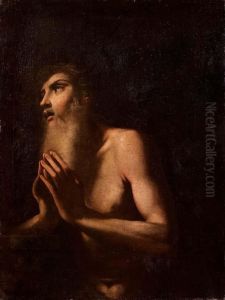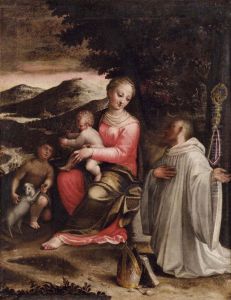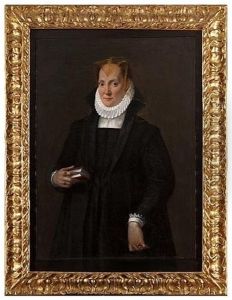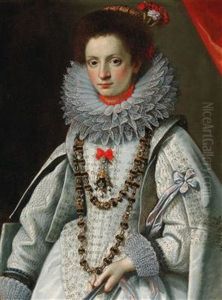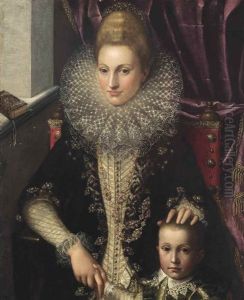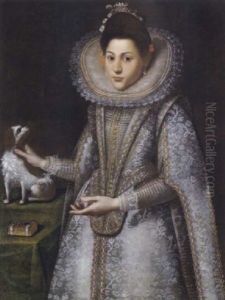Gervasio Gatti Paintings
Gervasio Gatti, also known as il Sojaro, was an Italian painter of the late Renaissance period, active mainly in his native region of Lombardy. Born around 1535 in Cremona, Gatti developed his artistic skills in a period dominated by the Mannerist style, which was characterized by its complex compositions, elongated figures, and often vibrant colors. His work is often associated with the Cremonese school of painting, which included other notable artists such as Bernardino Campi and Giulio Campi.
Gatti's early training is not well documented, but it is believed that he was a pupil of Bernardino Campi, which had a significant influence on his style. Throughout his career, Gatti worked on numerous religious commissions, which were common for artists of his time. His paintings often featured religious and mythological themes, executed with careful attention to detail and a rich color palette.
Gatti's works can be found in various churches and collections in Cremona and its surrounding areas. One of his most notable works is the 'Assumption of the Virgin', located in the Cathedral of Cremona. This piece is a prime example of Gatti's ability to blend the grandiose themes of the Renaissance with the emotional intensity of Mannerism.
Despite being a prolific painter, Gatti did not achieve the same level of fame as some of his contemporaries. However, his contributions to the Cremonese school and the broader Italian Renaissance are recognized by art historians. Gatti's ability to convey complex spiritual ideas through his art, along with his mastery of color and form, make his work a valuable study in the transition from Renaissance to Mannerist painting.
Gervasio Gatti passed away in 1619, leaving behind a legacy that would influence the generations of painters in the Cremona region. His works continue to be studied and appreciated for their artistic merit and historical significance within the context of Italian Renaissance art.
